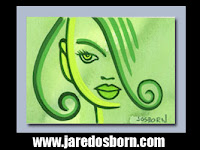
I mentioned my set of fortune telling cards a few blogs back. Well I finally made a full color prototype deck of them. I have one thing to say after that experience: Holy cow is it a pain in the ass. Forty eight individual hand crafted cards. I’m not even counting all the work that goes into the concept and illustration stage. Just the printing, cutting, and pasting stage.
Of course I used a computer. They make things a whole lot easier. Except when they don’t. I already had all the cards designed and laid out in an illustration program called Illustrator (clever name no?) but to line them up for printing on my Epson printer I used a design and layout program called InDesign. That’s when things got crazy and baffling. I’m not a novice in these programs but sometimes they do things that I have no explanation for. This is one of those things.
Each card is 2.5 x 4.5 inches. In Illustrator each card was 2.5 x 4.5 inches (no stroke for those in the know). I then use InDesign which is a program that makes it easy to line up and print out all forty eight cards. I should be able to line up all of the cards four to a page, print out the cards, and them flip the paper to print the card backs which are lined up exactly like the fronts. Computers are good at such precision. Except when they’re not.
I made an InDesign template with four 2.5 x 4.5 boxes to place my 2.5 x 4.5 in. Typical stuff. That’s how InDesign works. Make a box or shape and tell it to put a piece of artwork you have already prepared in that box. That’s how all the logos, pictures, and text get into books and magazines these days. The problem was that every time I brought my 2.5 x 4.5 cards into InDesign they measured 2.502 x 4.5. That’s two one thousands of an inch difference and you might think it wouldn’t matter but in the world of computers it messes up all the alignments. I have no explanation for why this occurred but I couldn’t correct it.
So I cut my losses and redesigned the cards directly in InDesign and imported just the artwork. Now all the type and little parts were out of Illustrator and into the design program. Everything lined up perfectly and it was a go for printing. Forty eight cards, four cards per page, twelve sheets of double sided matte paper, and twenty four print dialogue boxes latter they were all printed.
Now I had to cut and laminate them. Even thought the paper I was using was fairly thick it would stain or wear out easily without some sort of coating. I decided to try some self stick laminating paper because I didn’t want to by a laminating machine or use a wet spray on coating. It’s basically a clear contact paper and it was a little frustrating to use. Especially at first. Out of the twelve sheets front and back that I had to laminate I wrecked one (the first one) and had to redo eight cards because of air bubbles. Getting that laminate to lay flat isn’t always easy. So that’s three additional sheets I had to do. Twenty five percent failure rate isn’t very good. But I got ’em done.
The final step was rounding the corners. Most decks of cards have round corners so that is what I was going for. Of course I had to cut mine by hand. Forty eight times four is one hundred and ninety two cuts. My X-acto blade got a workout. The corners certainly don’t look machined but over all not bad.
And now I’m one more step closer to being able to tell the future.
I heart your cards! I can’t wait to see them in all their sexy precognitive glory.
I want a set with the hand-cut corners so I can cheat at fortunetelling.